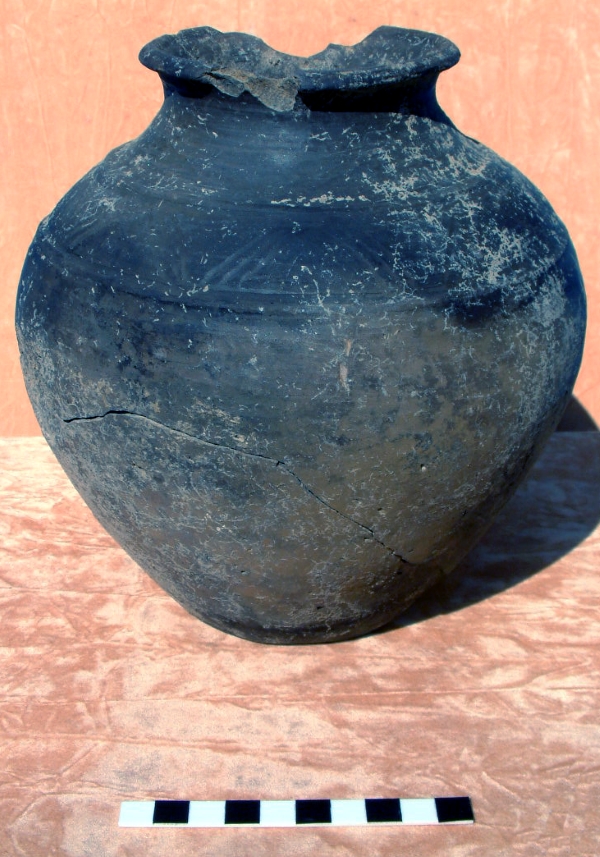
Today’s image for Day 32 of the VM 365 project is of a pottery vessel dating from an interesting period in history which is well represented in Thanet’s archaeological record, the later stages of the Roman conquest of Britain (50-75/100 AD).
Dating from a period when Late Iron Age pottery traditions were giving way to new Romanising production techniques, this near complete jar in a pottery fabric known as Thanet silty ware is decorated with raised beads and a chevron pattern around the upper part of the body. This particular vessel dates no later than 60-75 AD, a couple of decades after Britain was invaded and occupied by Roman forces.
The jar was recovered from the fill of a pit (cut 216) at an excavation at a site in Sea Parade, Birchington, it survived almost intact with only one large crack in the body of the jar and some damage to the rim. Characteristically for this type of vessel it has been deliberately made with three holes in the base, much like a modern flowerpot.
The many complete or near complete vessels of this period that have been recovered in excavations carried out at Minnis bay, particularly those of Antoinette Powell-Cotton in the 1950’s and 1960’s. The pottery sherds and vessels from these sites have been the foundation for classification and dating this important sequence of pottery, which spans a time of major cultural change.